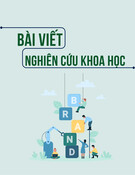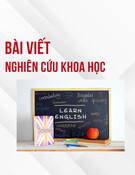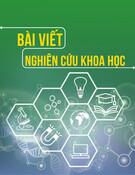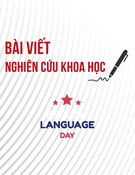
KINH TẾ - XÃ HỘI
TẠP CHÍ KHOA HỌC & CÔNG NGHỆ . SỐ 26 - 2021 77
THE EFFECTIVENESS OF UTILIZING TEXTBOOKS “LIFE”
AND “SPEAKOUT” IN LANGUAGE TEACHING AT UNETI IN IR 4.0
HIỆU QUẢ CỦA VIỆC SỬ DỤNG GIÁO TRÌNH “LIFE” VÀ “SPEAKOUT”
TRONG GIẢNG DẠY NGÔN NGỮ TẠI UNETI TRONG THỜI ĐẠI 4.0
Nguyễn Thị Thanh Hà
Khoa Ngoại ngữ, Trường Đại học Kinh tế - Kỹ thuật Công nghiệp
Đến Tòa soạn ngày 04/05/2020, chấp nhận đăng ngày 18/05/2020
Abstract:
Digital technology has put much influence on curriculum design and lesson planning,
especially for language classes. This study shed a light on the background of Industrial
Revolution (IR) 4.0 in relation with designing curriculum and selecting appropriate teaching
materials in higher education in Vietnam. Significantly, this is a descriptive research which
was utilized either quantitative or qualitative methodology. It drew on database provided by
questionnaire and observation checklist to investigate the effectiveness of using of LIFE and
SPEAKOUT as the main textbooks at University of Economics - Technology for Industries
(UNETI). The results indicated that those textbooks do an acceptable work in supplying fun,
exciting and goal-oriented activities for students. Students were encouraged to get engaged,
negotiate meaning, self-invest in their learning and produce language in communicative
contexts to achieve an outcome. The findings also showed that the authentic content from
LIFE and SPEAKOUT is motivating and confidence-boosting for learners. Moreover, this
study highlights that the implementation of those reliable teaching documents should be
obtained for learners to fully benefit.
Keywords:
Curriculum design, teaching material, LIFE, SPEAKOUT, IR 4.0.
Tóm tắt:
Công nghệ kỹ thuật số có ảnh hưởng tới thiết kế chương trình, lập kế hoạch giảng dạy; đặc
biệt trong lớp học ngôn ngữ. Nghiên cứu làm sáng tỏ mối quan hệ của cách mạng công
nghiệp 4.0 với thiết kế chương trình và lựa chọn giáo trình trong giáo dục đại học Việt Nam.
Nghiên cứu mô tả này sử dụng phương pháp định lượng và định tính. Công cụ khảo sát và
phiếu kiểm tra quan sát giúp thu thập dữ liệu về hiệu quả trong sử dụng giáo trình “LIFE” và
“SPEAKOUT” tại UNETI. Kết quả cho thấy người học được cung cấp những hoạt động định
hướng mục tiêu thú vị; được khuyến khích tham gia các hoạt động tương tác, đàm phán và tự
tìm tòi nhằm chủ động sử dụng ngôn ngữ trong các bối cảnh giao tiếp; đồng thời chỉ ra nội
dung giáo trình mang tính xác thực cao, nhằm thúc đẩy và tăng cường sự tự tin cho người
học. Nghiên cứu nhấn mạnh việc sử dụng các giáo trình đáng tin cậy này cần được khai thác
thêm để đem lại nhiều lợi ích hơn cho người học.
Từ khóa:
Thiết kế chương trình, giáo trình giảng dạy, LIFE, SPEAKOUT, Cách mạng công nghệ 4.0.
1. INTRODUCTION
1.1. What is Industrial Revolution (IR) 4.0?
Readers are enviably entitled with an example
provided by Fisk (2017) to understand how the
industrial revolutions have changed across the
time. Firstly, workers used water and stream to
mechanize production during the IR 1.0.
Secondly, during the IR 2.0, with the use of
electric power, mass production was created.
The next period was known with the IR3.0
in which electronics and information

KINH TẾ - XÃ HỘI
78 TẠP CHÍ KHOA HỌC & CÔNG NGHỆ . SỐ 26 - 2021
technology were utilized to automate
production. Then, currently is the 4th IR which
strengthens the connection among the physical,
digital and biological worlds with the
assistance of the new technologies. Diwan
(2017) advocates that those advancements are
directed by the outgrowth of artificial
intelligent, robotics, the internet of things,
autonomous vehicles, bio and nanotechnology,
3-D printing, material science, quantum
computing and energy storage. Due to that fact,
every life aspect including business,
governance and education are impacted by the
IR 4.0.
1.2. Various trends in education related to
IR 4.0
There are nine trends related to IR 4.0 in
education (Fisk, 2017).
Firstly, learning can be taken place anytime
anywhere with the implementation of
e-learning tools and flipped classroom
approach.
Secondly, each individual with different
learning habit and style should be assigned
appropriate tasks or assignments. Hence, it is
said to enhance positive learning experience
and motivate learners to focus on their own
academic abilities.
Thirdly, students are able to determine how
they want to learn, to select the learning tools
or techniques that they prefer.
Fourthly, theory lessons can be researched
by students at home, meanwhile more
project-based learning should be assigned for
the students to apply their knowledge and
skills such as organizing, collaborating and
time managing to complete a series of projects
during a school-term.
Fifthly, the more project students are exposed,
the more skillful they can be during the
process of team work and face-to-face
communication.
Sixthly, the stages of applying students’
theoretical background help them to make
inferences based on logic and trends from data
interpretation.
Seventhly, the learning outcomes will be
assessed differently and accurately when
students are working on their projects in the
field.
Eighthly, the significant aspect in designing
and updating the curriculum is truthfully
students’ opinions and ideas. Their inputs help
pedagogical developers maintain curriculum
contemporariness, up-to-date and usefulness.
Lastly, students will become more independent
in their own learning, thus forcing teachers to
assume a new role as facilitators who will
guide the students through their learning
process.
The nine trends of IR 4.0 shift the major
learning responsibilities from the instructors to
the learners. Instructors should play their roles
to support the transition and should never
consider it as a threat to the conventional
teaching profession.
1.3. Impacts of IR 4.0 on the field of higher
education in Vietnam
IR 4.0 is evaluated to have a strong impact on
all aspects of life, economy and society, not
just at the scale of factories and enterprises.
For higher education, IR. 4.0 has the following
predictable impacts firstly on the labor market
with low-paid and high-paid groups of
incomes and the deciding opponent is on how
much knowledge and skill they own; secondly,
so as to be equipped with essential background,
learners need to utilize mobile connectivity
and cloud computing application through
online courses, meetings or conferences,
Diwan, (2017) also predicts how an average
classroom will look like in the next 5 to 7
years.

KINH TẾ - XÃ HỘI
TẠP CHÍ KHOA HỌC & CÔNG NGHỆ . SỐ 26 - 2021 79
A huge change in the layout of the
classroom.
Virtual and augmented reality will change
the educational landscape.
Flexible assignments will accommodate
multiple learning styles.
2. LITERATURE REVIEW
2.1. Curriculum Design and Development of
Materials for Second Language Teaching
The English as Foreign/ Second Language
(EFL/ ESL) textbooks play a vital role in
providing teaching content and instructional
direction for the learning and teaching process.
Almost teachers utilize non-traditional text as
the main source to deliver either the content or
the learning activities in the classroom (Sadler,
1998). As Graves (1996) indicates, the
textbooks appear as unquestionable resources
for learning a foreign language and central in
defining course of action and content.
EFL/ESL textbooks not only allow us to
identify teaching and learning processes, but
they are also potentially useful for providing a
site for study of the theory-in-use of an
English Language Teaching (ELT) community
(Sadler, 1998). When researchers work on
textbooks, they are able to examine the
inherent contents driven by textbook designers.
Besides, the textbooks can indicate the writer’s
perceptions and choices related to
methodology, course design and instruction
and how these are vocalized to promote
students’ knowledge about EFL efficaciously.
2.2. Monitoring and Evaluation of
Curriculum Design
Monitoring and assessing progress is a type of
measurement teachers take to evaluate
student’s learning. This key aspect cannot be
omitted in the curriculum. The reason is that it
helps the teachers and students understand to
what extent goals and objectives have been
meet and what still needs to be reinforced.
As Sadler (1998) underlines, “Formative
assessment refers to assessment that is
specifically intended to provide feedback on
performance to improve and accelerate
learning” (p. 77). In addition, formative and
summative assessment for a specific lesson
must be analyzed and displayed by the
curriculum designers. In details, evaluation
criteria should be supplied for short-term
achievement tests in accordance with other
types of testing and assessment. It is
undeniable that it takes much time and effort
to design a language course due to a variety of
components and conceptualizations. The
components of curriculum design proposed by
Graves (1996) to a great extent contribute to
the development of suitable language learning
materials.
2.3. Teaching Materials
2.3.1. Definition
Related to the subject of the study, it is
essential to clarify some related conceptions:
“textbook”, “course book”, and “materials”.
Wikipedia, one of the most common
encyclopedia in the world, defines “textbook”
as a standard source of information
constituting of study content for education
institutions.
Materials mean anything which is used for
teaching and learning process, for example, a
text book, a workbook, a cassette, a CD-ROM,
a video, a photocopied handout, a newspaper,
a paragraph written on a whiteboard or
anything which presents or informs about the
language being learned (Tomlinson, 2001).
2.3.2. Types of Teaching Materials
According to Tomlinson (2001), there are
different types of materials designed in
different forms for different purposes and
based on different criteria such as printed

KINH TẾ - XÃ HỘI
80 TẠP CHÍ KHOA HỌC & CÔNG NGHỆ . SỐ 26 - 2021
materials, non-printed materials and ones that
comprise both print and non-print sources.
Graves (1996) points out that textbooks are
classified into two kinds: traditional textbooks
and communicative textbooks.
Traditional textbooks focus on the forms, the
syllabus and examination, highlight the
significance of reading and writing activities,
not the communicative functions of language.
Meanwhile, communicative textbooks are
designed to focalize on oral communication,
demonstrate the authentic language of the
outside world and light up the importance of
pair and group works.
Due to the need of using foreign language as a
medium of communication in social life,
communicative textbooks are considered
premium choice.
2.3.3. Roles of Materials in Language
Teaching and Learning
Tomlinson (2001) mentions the necessary
knowledge in textbooks is supplied for
classroom lessons under the theme of different
activities, various tasks like reading or
explanations.
Riasati and Zare (2010) state that textbooks
play a very significant role in the realm of
language teaching and learning and are
regarded the next crucial factor in EFL
classroom after the teacher.
Fisk (2017) also declares that textbooks is a
key component in most language programs
and they provide the learners with “the basis
for the content of the lessons, the balance of
skills taught and the kinds of language practice
the students take part in”.
Richard (2001) also shows that there are no
differences of textbooks’ roles between
learning and teaching.
In a nutshell, it is undeniable the importance
of teaching materials. Therefore, it is
substantive to design or select a good teaching
material for a course.
2.4. LIFE and SPEAKOUT
2.4.1. What is LIFE and SPEAKOUT?
National Geographic enriches the content with
LIFE to raise a numerous crucial benefits by
inspiring users to think about the planet,
praising human accomplishment and
investigating diversity. Accordance with that
fact, a series of LIFE are also designed in line
with ELT settings to outperform desires.
SPEAKOUT driven by Pearson incorporates
BBC video content to simplify the teaching
and learning process. This course is for
grown-ups and youthful grown-ups. In
SPEAKOUT, it is approachable to themes,
language development and skills works.
Communicative tasks are prominent
systematically with the other three language
skills.
2.4.2. LIFE and SPEAKOUT in line with IR
4.0
Combine teaching and learning with practice
LIFE: Systems and layouts are provided to
students to work insides so as to utilize the
language more inventively. Instructional
activities encourage learners to integrate the
practice and theory in the classroom. Critical
thinking is a must for learners when dealing
with LIFE to explore their attitudes and
values.
SPEAKOUT: The syllabus is emphasized on
so many pronunciation features that learners
can practice themselves. DVD lessons enables
understudies to consolidate the languages, for
examples, 90-120 hours of teaching materials,
comprehensive language bank, photo bank to
expand vocabulary, updated visuals and texts
from BBC and other authentic materials.

KINH TẾ - XÃ HỘI
TẠP CHÍ KHOA HỌC & CÔNG NGHỆ . SỐ 26 - 2021 81
Diversify educational roadmaps
LIFE is a series of books for different level of
student proficiency, from lower level ability to
higher level ability (A1, A1-A2, A2-B1).
Moreover, it is designed to suit Vietnamese
learners. Therefore, Life, Vietnam edition is
distributed to the education.
SPEAKOUT are driven with rich content from
latest photos and illustrations introduced in
every unit. Besides, the video bank from the
BBC including documentaries, dramas and
entertainment are unique and designed
logically for learners to study themselves.
Encourage lifelong learning
LIFE is designed to increase learners’ higher
self-esteem with workbook online on Myelt
and maximize their learning retention in
imparting knowledge. In addition, discovering
the world of LIFE helps learners to get more
fun so as to associate with unpleasant
intellectual and emotional feelings.
SPEAKOUT: learners raise their confidence by
concentrating on their experience. Moreover,
learners can follow the clear objectives in
every unit to emphasize on the important
issues. Besides, learners are able to collaborate
attentively.
Promote teaching and learning English
language, strengthen the application of
information technology in learning and
management
LIFE: learners can use Life software known as
an interactive whiteboard application for
classroom. The users can cover the main
content in each unit by clicking an assets
button and a toolbar at the base. Audios,
grammar focus and different types of exercises
are also included on the screen, which is easy
for learners to comprehend. Furthermore,
informative worksheets, webminars and
additional training exercises are introduced on
not only Cengageasia but also a Natgeo
Vietnam facebook page. The most important
feature is the Outcomes Examview
Assessment CD_ROM which is an incredible
tool, helping learners to see and record their
improvement.
SPEAKOUT: GSE/ CEFR mapping helps
students track their progress and see the
relevance of what they are learning. These
books also provide learners with MyEnglishLab
(MEL), Speakout Extra, Study Booster to use
the resources whenever they want to develop
skills. MEL content can be assigned for the
whole class, groups or individuals. The use of
MEL allows for blending or flipping
classroom learning with synchronous and/or
asynchronous learning outside of the
classroom. It also has the potential to build a
bridge, whereby teaching and technology
support learning and inform each other.
3. CONTEXT OF THE STUDY
3.1. Teaching context at UNETI
At UNETI, students are trained for four years
with such majors as electronic -
communication technology, accounting,
banking and finance and so on. These majors
are related to the technical means and their
interrelation with human society and most
documents or using guides about these fields
are in English. Therefore, English becomes a
compulsory subject at UNETI. A series of
New Headway was used as the main textbook
at here. Moreover, Linguistics is a new major
which has been set at UNETI since the first
semester of 2019-2020 school year. Due to the
changes in IR 4.0 and specialized students’
needs, it is high time that a new curriculum
was considered to be more appropriate. In
order to do that, teaching materials is the most
crucial factor in the curriculum and syllabus.
3.2. Participants
85 students from DHNNA13A1, DHKT11A8
and DHQT11A1 took part in this study. The
participants are observed to be at different
level of English proficiency. Some students

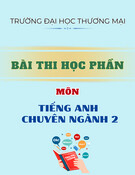
![Đề cương học phần Ứng dụng công nghệ thông tin trong giảng dạy ngoại ngữ (Application of Information Technology in Language Teaching) [Mới nhất]](https://cdn.tailieu.vn/images/document/thumbnail/2025/20250212/tuetuebinhan666/135x160/881739332468.jpg)
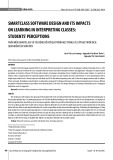







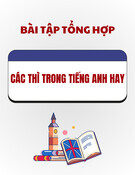
![Bài tập thì hiện tại hoàn thành [kèm đáp án chi tiết]](https://cdn.tailieu.vn/images/document/thumbnail/2025/20251106/thuthao27062004/135x160/41601762420911.jpg)
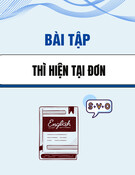
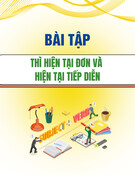
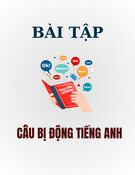
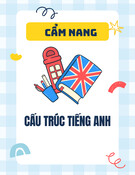
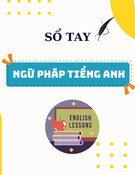
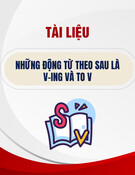
![Tài liệu ôn tập Ngữ pháp tiếng Anh [chuẩn/mới nhất/tổng hợp]](https://cdn.tailieu.vn/images/document/thumbnail/2025/20250821/vuongdinhlinh1412@gmail.com/135x160/933_tai-lieu-on-tap-ngu-phap-tieng-anh.jpg)
